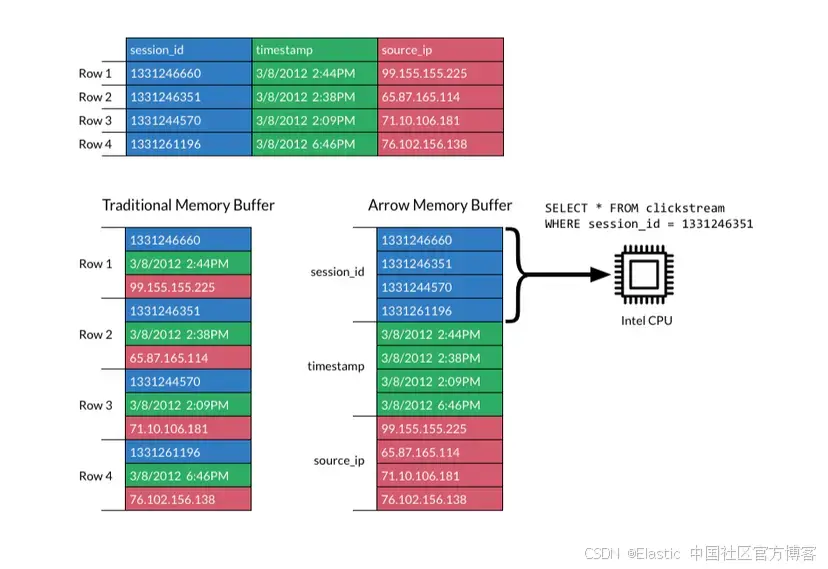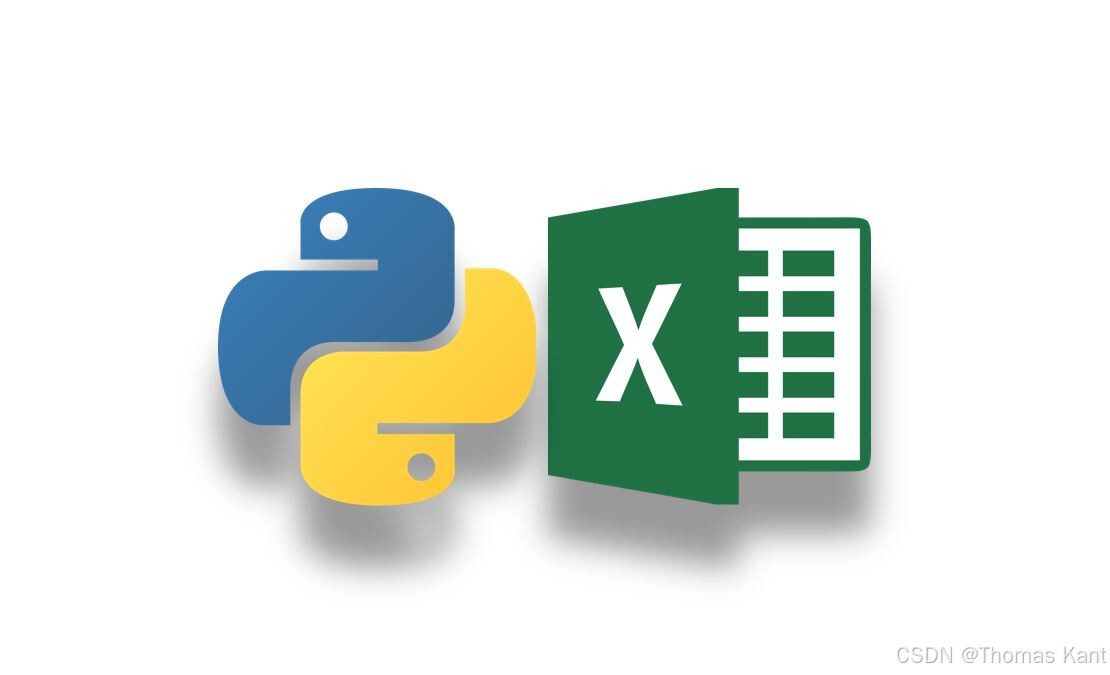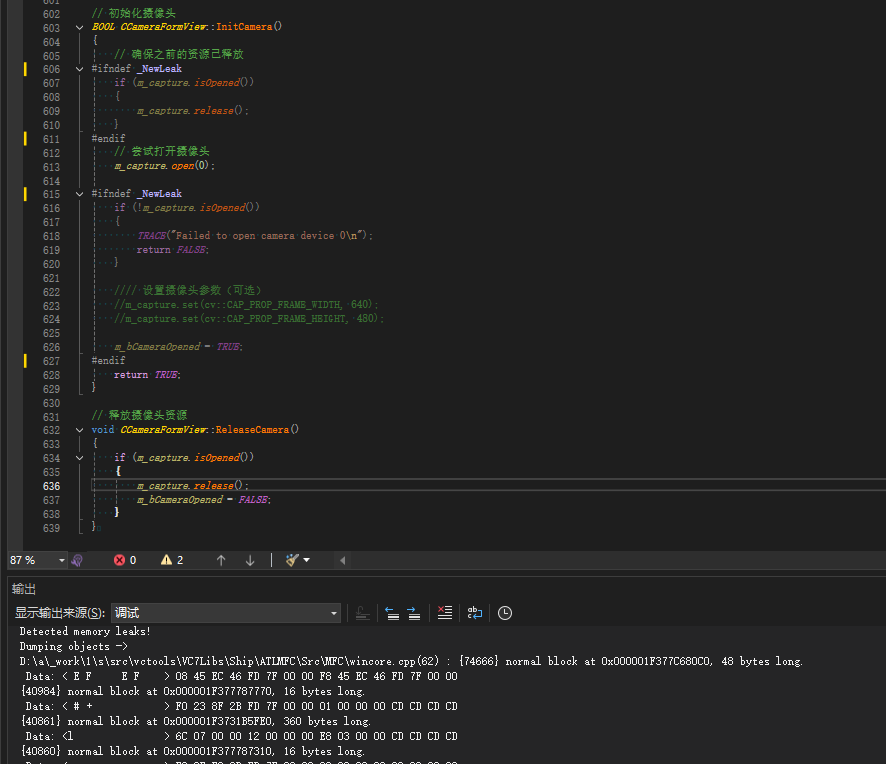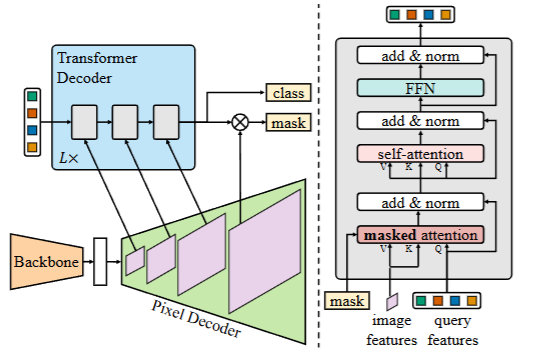从0开始使用面对对象C语言搭建一个基于OLED的图形显示框架(基础图形库实现)
目录
基础图形库的抽象
抽象图形
抽象点
设计我们的抽象
实现我们的抽象
测试
抽象线
设计我们的抽象
实现我们的抽象
绘制垂直的和水平的线
使用Bresenham算法完成任意斜率的绘制
绘制三角形和矩形
矩形
三角形
实现
绘制圆,圆弧和椭圆
继续我们的测试
基础图形库的抽象
历经千辛万苦,我们终于可以开始行动起来,绘制图形了。我们将要绘制线,矩形,圆,椭圆等一系列基础的图形。问我其他的绘制呢?不必着急,我们慢慢来谈。
有没有发现我们现在的谈论越来越高层了?我们现在绘制图像的时候还会关心我用的是硬件IIC或者是软件SPI吗?不会,你甚至可能才意识到我们使用的是OLED!这就是抽象带给我们的好处。我们现在脑子里只有抽象的绘图设备这个概念。它可以绘制点,面。仅此而已。
本篇的代码在:MCU_Libs/OLED/library/Graphic/base at main · Charliechen114514/MCU_Libs (github.com)
抽象图形
抽象点
设计我们的抽象
我们即将迈出我们的第一步,那就是绘制一个点。
typedef uint16_t PointBaseType;
/*x: The x-coordinate of the pointy: The y-coordinate of the pointoperations: An instance of CCGraphic_BaseOperations that stores operations or behaviors related to the point, likely used for drawing or other graphical manipulations.
*/
typedef struct __CCGraphic_Point{PointBaseType x;PointBaseType y;
}CCGraphic_Point;
void CCGraphic_init_point(CCGraphic_Point* point, PointBaseType x, PointBaseType y);
void CCGraphic_draw_point(CCDeviceHandler* handler, CCGraphic_Point* point);一个点的基本组成,就是给定一个由两个数的组合——X和Y,长度上,笔者为了防止特大设备,使用了PointBaseType隔离了具体的长度大小。
小技巧:
当你发现一个问题很复杂的时候,最好的办法就是隔离!将大问题分解为若干的小问题,以笔者上面遇到的困难为例子。如何保证自己的点可以分布在满足设备宽度的平面上呢?答案是分解问题:点分布在平面上,使用的是对平面属性的PointBaseType上,他只知道自己属于这个类型,就一定不会超越所在的平面,不会出现绘图平面过大导致使用的数据类型发生溢出,至于如何保证不发生溢出呢?那是另一个问题,笔者使用的架构下,不会出现uint16_t不够使用的问题。但是如果的确出现了超大设备,我只需要轻而易举的定义一个HYPER_LARGE_DEVICE的宏,或者是面对资源极端紧张的嵌入式设备,定义一个HYPER_SMALL_DEVICE,就可以让所有的资源占用瞬间缩小一半
#ifdef HYPER_LARGE_DEVICE typedef uint32_t PointBaseType; #elif defined(HYPER_SMALL_DEVICE) typedef uint8_t PointBaseType; #else typedef uint16_t PointBaseType; #endif而我其他的代码一行都不用动,轻而易举的完成了迁移。
实现我们的抽象
让我们看看我们的代码多么简洁吧!
#include "Graphic/base/CCGraphic_Point/CCGraphic_Point.h"
#include "Graphic/CCGraphic_device_adapter.h"
void CCGraphic_draw_point(CCDeviceHandler* handler, CCGraphic_Point* point)
{handler->operations.set_pixel_device_function(handler, point->x, point->y);
}
void CCGraphic_init_point(CCGraphic_Point* point, PointBaseType x, PointBaseType y)
{point->x = x;point->y = y;
}绘制一个点,就是调用了设备的绘制点的办法。你问我咋绘制的?啥?你需要关心吗?我不说你可能都不知道我是拿的LCD做测试呢(笑),但是,这里我需要严肃提醒的是——不要在关心实时性的绘图设备上这样做,让我们看一看调用链就好了:
CCGraphic_draw_point -> set_pixel_device_function(实际上就是setpixel_device_oled) -> oled_helper_setpixel
也就是说,我们多调用了两次functions来换取对任意设备的抽象。但是我也可以一行代码不改,就可以完全把调用链换成
CCGraphic_draw_point -> set_pixel_device_function(实际上就是setpixel_device_lcd) -> lcd_helper_setpixel
多简单!
测试
现在我们就可以开始测试了
OLED_HARD_IIC_Private_Config pvt_config;
OLED_Handle handle;
CCGraphic_OLED_Config config;
void on_test_init_hardiic_oled(CCDeviceHandler* device)
{bind_hardiic_handle(&pvt_config, &hi2c1, 0x78, HAL_MAX_DELAY);config.createType = OLED_HARD_IIC_DRIVER_TYPE;config.related_configs = &pvt_config;register_oled_paintdevice(device, &handle, &config);
}
void on_test_draw_points(CCDeviceHandler* handle)
{CCGraphic_Point point;CCGraphic_init_point(&point, 0, 0);for(uint8_t i = 0; i < 20; i++){point.x = i;point.y = i * 2;CCGraphic_draw_point(handle, &point);}handle->operations.update_device_function(handle);
}
// at main.c
CCDeviceHandler handler;
on_test_init_hardiic_oled(&handler);
on_test_draw_points(&handler);不出意外的话不会有任何问题。
抽象线
线的绘制开始有所讲究了,我们需要使用更好的,不涉及浮点数运算的办法来尽可能的回避耗费时间的浮点数运算。这隶属于计算机架构体系的内容,关于ARM,计算浮点数远远比计算整数的开销大(除非使用的是更贵的特化硬件)。现在,让我们开始绘制线线
设计我们的抽象
笔者建议你看到这里了,先自己构思一下如果是你,你如何抽象呢?
笔者先给你看看江科大的代码
void OLED_DrawLine(int16_t X0, int16_t Y0, int16_t X1, int16_t Y1)
{...
}
啥?你问我抽象呢?怎么是实现呢?我只能说——它的函数签名就是抽象咯(笑)。各种处理混在一起,是这样的代码非常难读的一个根本原因。
笔者揭晓我的抽象。
#include "Graphic/base/CCGraphic_Base.h"
#include "Graphic/base/CCGraphic_Point/CCGraphic_Point.h"
typedef struct __CCGraphic_Line{CCGraphic_Point p_left;CCGraphic_Point p_right;
}CCGraphic_Line;
void CCGraphic_init_line( CCGraphic_Line* line, CCGraphic_Point pl, CCGraphic_Point pr);
void CCGraphic_draw_line(CCDeviceHandler* handler, CCGraphic_Line* line);一个争论:
这样实现好不好啊?
typedef struct __CCGraphic_Line{CCGraphic_Point* p_left;CCGraphic_Point* p_right; }CCGraphic_Line;笔者思考过,事实上,笔者第一代的OLED框架(当然,远远没有现在的那么完善,也远远没有现在的好,甚至还有bug)就是这样实现的。我既然跟上面的实现不一致,那显然,有好处也就有坏处。
我们需要思考的是——我们的对象指针和对象本身表达的含义的区别是什么。关于这个说法,婆说婆有理,公说公有理,笔者这里给出的看法是:
对象本身在结构体中的声明是一种上层抽象对底层对象的强所属权,也就是说,对于每一个整个结构体模板刻出来的结构体对象的成员而言,内部所拥有的点都是独一无二的。换而言之:这就是我的资源,不是借的,更不是偷的!所以现在笔者采用的抽象,更加像是线对点宣誓了主权,这就是线组成的点,没有任何可以商量的余地。
对象指针则是一种弱的引用,表达的是一种借用。上面使用指针占用的抽象,更加像是:借来了两个点,然后用一下这两个点来描述了一下一根直线。用完了对象释放干净了,也就作罢了,但是点本身不会消失。就像我们用一根笔连起来了两个点,组成了一根线,现在我们只是把线擦除了,但是点还在呢!它还可以用来做别的事情。
从内存占用上来看,在ARM32体系上,我们都知道指针的大小是32位,4个字节,所以,我们一个sizeof就能得到使用指针抽象的线也就是8个字节。是一个恒定的大小。对于现在笔者采用的抽象,则是2倍的CCGraphic_Point大小,随着不同的PointBaseType, Line自身的大小也会发生波动,在uint8_t设备上,我们一共是4个字节大小,比指针描述的小,在uint16_t上则是不分伯仲,对于超大设备Line的大小就会膨胀为指针实现的两倍。
但是,另一方面,正如我所说的,这样的资源只是借用,他必须存在于哪个地方,问题来了,你能保证你所使用的点总是有效的吗?
CCGraphic_Line l; {CCGraphic_Point tl;CCGraphic_Point br;CCGraphic_init_line(&l, tl, br); } // 在这里使用还安全嘛? CCGraphic_draw_line(&handle, &l);你也许知道你使用的对象是有效的,但是客户程序员呢?他不知道啊?随后应用层的程序因为非法的内存访问崩溃了(进入了Hard_Fault),他还要幸幸苦苦看你的实现,然后沮丧的调试了一天发现是库作者这个家伙居然只是借用点!最后代来的时间的开销是任何人都无法接受的,这样不确定的风险分明更加的剧烈。
笔者想要说的是:每一个设计都有它的优点和缺点,作为一个合格的程序员,不管是嵌入式程序员,还是架构设计师,都需要明确的表达自己资源的所属权,以及,不要违反“最小惊讶原则”(例子:这个怎么资源突然非法了!为什么库没有帮助我维护???)
实现我们的抽象
规避浮点数运算!这个是我早就说了的。我们需要请出的算法就是Bresenham (montana.edu)算法,这个算法本质上使用的是DDA算法,一种整数微分思维。我们对得到的微分做一次取整,得到的就是整数的点(这是可以接受的,我们没办法在一个LCD或者是OLED上绘制坐标为(1.25, 4.75)的点,不是吗?)
为了化简,我们对绘制直线进行分类讨论
-
绘制一条垂直的线
-
绘制一条水平的线
-
绘制任意斜率的线
void CCGraphic_draw_line(CCDeviceHandler* handler, CCGraphic_Line* line)
{ // test if the verticalif(line->p_left.x == line->p_right.x) return __on_handle_vertical_line(handler, line); if(line->p_left.y == line->p_right.y)return __on_handle_horizental_line(handler, line);return __pvt_BresenhamMethod_line(handler, line);
}没想到吧,笔者就用了这几行,完成了这几个事情。好吧,我承认这样有点耍赖了。实际上内部还是颇为复杂,但是,绘制垂直还有水平的线是轻而易举的,试一试?来看看笔者的代码吧!
绘制垂直的和水平的线
/*draw the lines that matches the equal x
*/
static void __on_handle_vertical_line(CCDeviceHandler* handler,CCGraphic_Line* line
)
{PointBaseType max_y = max_uint16(line->p_left.y, line->p_right.y);PointBaseType min_y = min_uint16(line->p_left.y, line->p_right.y);CCGraphic_Point p;p.x = line->p_left.x;for(PointBaseType i = min_y; i <= max_y; i++){p.y = i;CCGraphic_draw_point(handler, &p);}
}
static void __on_handle_horizental_line(CCDeviceHandler* handler,CCGraphic_Line* line
)
{PointBaseType max_x = max_uint16(line->p_left.x, line->p_right.x);PointBaseType min_x = min_uint16(line->p_left.x, line->p_right.x);CCGraphic_Point p;p.y = line->p_left.y;for(PointBaseType i = min_x; i <= max_x; i++){p.x = i;CCGraphic_draw_point(handler, &p);}
}我下面来谈论一下一些要点:
解释一下max_uint16和min_uint16?
没啥好解释的啊?这个就是择取大者和小者,有啥好说的呢?
为什么变量没有像江科大那样一股脑堆在前面呢?
笔者可以给出充分的原因:我希望变量出现在它该出现的位置,比起来,你也不喜欢看变量一坨屎拉在了函数的前面,下面看实现的时候漫天找这个变量在哪里吧。没那个必要!但是这个需要看情况,如果作者实在不会哪怕一丁点的函数设计,把代码一股脑的堆到了一个函数里,那还不如江科大的变量写法!
为什么不考虑
{PointBaseType max_y = max_uint16(line->p_left.y, line->p_right.y);PointBaseType min_y = min_uint16(line->p_left.y, line->p_right.y);for(PointBaseType i = min_y; i <= max_y; i++){CCGraphic_Point p;p.x = line->p_left.x;p.y = i;CCGraphic_draw_point(handler, &p);} }这个是经典的效率之争。你相信所有的编译器,都会意识到:“哦我的天,这个程序员是一个白痴,p的X坐标永远不会改变,这个白痴为什么要重新赋值一个相同的值max_y - min_y + 1次呢?”嘛? 你不敢!,你永远也不知道使用你的代码的人,在用着怎样的老毕等编译器,他对这样的优化足够迟钝,以至于他对你那可怜的栈来来回回弹弹压压,让你的程序性能被砍到惊呼国骂。你敢打赌使用你库的代码的人,足够的现代嘛?那么,不如让我们的表述更加的明白
{PointBaseType max_x = max_uint16(line->p_left.x, line->p_right.x);PointBaseType min_x = min_uint16(line->p_left.x, line->p_right.x);CCGraphic_Point p;p.y = line->p_left.y;for(PointBaseType i = min_x; i <= max_x; i++){p.x = i;CCGraphic_draw_point(handler, &p);} }这样的代码的开销瞬间压到只剩下一次地址解引用和赋值操作了,一下子无论何种编译器,都能生成最为高效的字节码。
参数设计的时候,对于复杂抽象类型,使用指针还是使用结构体本身传递参数?
ARM32体系架构有16个寄存器,不同于x86老毕等,传递个结构体最后压内存去了,一些简单的POD类型(我们的Point就是一个简单的POD类型,只有数据没有方法)回直接解析内部的类型是整数,直接传送到寄存器中,将效率提升十几倍,而不用访问内存。这样看,对于一部分最为简单的结构体,直接传递对象本身不是一件特别耗操作的事情,但是,笔者仍然建议:如果你希望这个资源只是被借用一下,或者,表达传递的就是这个对象本身,他在ARM广阔的内存海洋是独一无二的话,使用指针,哪怕他就一个字节大小!
所以,为什么在函数前面的最前面添加static
可惜了我们的C语言程序设计表达私有只能使用static办法,这表明,这个函数只能在文件内部访问,实际上的函数签名会被独特标记,导致外部生成的签名无法对应于实际上被static修饰的函数,这也就意味着无法通过编译!他没办法认识这个被static修饰的函数。至于其他乱七八糟的什么重名问题,我负责的告诉你,不要指望所有编译器都会正确的反应你的UB行为,不然,你就会在“编译了半天发现被这个问题绊了一跤”和“这个程序的行为怎么这么诡异啊?不是跳转道我想要的函数”中二选一了,反正代价是你的一天被你的UB行为坑害(笑)
使用Bresenham算法完成任意斜率的绘制
// Bresenham's Line Algorithm, designed to avoid floating point calculations
// References: https://www.cs.montana.edu/courses/spring2009/425/dslectures/Bresenham.pdf
// https://www.bilibili.com/video/BV1364y1d7Lo
void __pvt_BresenhamMethod_line(CCDeviceHandler* handler, CCGraphic_Line* line)
{
#define __pvt_fast_draw_point(X, Y) \do { \p.x = X; \p.y = Y; \CCGraphic_draw_point(handler, &p); \} while(0)
// Define initial points for the line: p_left and p_right represent the endpointsint16_t startX = line->p_left.x;int16_t startY = line->p_left.y;int16_t endX = line->p_right.x;int16_t endY = line->p_right.y;
// Flags to indicate transformations of coordinatesuint8_t isYInverted = 0, isXYInverted = 0;{// If the start point's X coordinate is greater than the end point's X, swap the pointsif (startX > endX) {// Swap the X and Y coordinates for the start and end pointsswap_int16(&startX, &endX);swap_int16(&startY, &endY);}
// If the start point's Y coordinate is greater than the end point's Y, invert the Y coordinatesif (startY > endY) {// Invert Y coordinates to make the line direction consistent in the first quadrantstartY = -startY;endY = -endY;// Set the flag indicating Y coordinates were invertedisYInverted = 1;}
// If the line's slope (dy/dx) is greater than 1, swap X and Y coordinates for a shallower slopeif (endY - startY > endX - startX) {// Swap X and Y coordinates for both pointsswap_int16(&startX, &startY);swap_int16(&endX, &endY);// Set the flag indicating both X and Y coordinates were swappedisXYInverted = 1;}
// Calculate differences (dx, dy) and the decision variables for Bresenham's algorithmconst int16_t dx = endX - startX;const int16_t dy = endY - startY;const int16_t incrE = 2 * dy; // Increment for eastward movementconst int16_t incrNE = 2 * (dy - dx); // Increment for northeastward movement
int16_t decision = 2 * dy - dx; // Initial decision variableint16_t x = startX; // Starting X coordinateint16_t y = startY; // Starting Y coordinate
// Draw the starting point and handle coordinate transformations based on flagsCCGraphic_Point p;if (isYInverted && isXYInverted) {__pvt_fast_draw_point(y, -x);} else if (isYInverted) {__pvt_fast_draw_point(x, -y);} else if (isXYInverted) {__pvt_fast_draw_point(y, x);} else {__pvt_fast_draw_point(x, y);}
// Iterate through the X-axis to draw the rest of the linewhile (x < endX) {x++; // Increment X coordinateif (decision < 0) {decision += incrE; // Move eastward if decision variable is negative} else {y++; // Move northeastward if decision variable is positive or zerodecision += incrNE;}
// Draw each point along the line with coordinate transformation as neededif (isYInverted && isXYInverted) {__pvt_fast_draw_point(y, -x);} else if (isYInverted) {__pvt_fast_draw_point(x, -y);} else if (isXYInverted) {__pvt_fast_draw_point(y, x);} else {__pvt_fast_draw_point(x, y);}}}
#undef __pvt_fast_draw_point
}好长一大串,先不必着急,我一步步慢慢说。实际上,这个算法除了使用DDA以外,还用了化未知为已知的办法。我的意思是:
// If the start point's X coordinate is greater than the end point's X, swap the pointsif (startX > endX) {// Swap the X and Y coordinates for the start and end pointsswap_int16(&startX, &endX);swap_int16(&startY, &endY);}
// If the start point's Y coordinate is greater than the end point's Y, invert the Y coordinatesif (startY > endY) {// Invert Y coordinates to make the line direction consistent in the first quadrantstartY = -startY;endY = -endY;// Set the flag indicating Y coordinates were invertedisYInverted = 1;}首先,确保我们的线总是向正的,斜率总是大于0
// If the line's slope (dy/dx) is greater than 1, swap X and Y coordinates for a shallower slopeif (endY - startY > endX - startX) {// Swap X and Y coordinates for both pointsswap_int16(&startX, &startY);swap_int16(&endX, &endY);// Set the flag indicating both X and Y coordinates were swappedisXYInverted = 1;}上面则是在斜率大于1的基础上,将变换映射到介于0 < k < 1的范围上。
最后,使用核心算法直接绘制
// Calculate differences (dx, dy) and the decision variables for Bresenham's algorithmconst int16_t dx = endX - startX;const int16_t dy = endY - startY;const int16_t incrE = 2 * dy; // Increment for eastward movementconst int16_t incrNE = 2 * (dy - dx); // Increment for northeastward movement
int16_t decision = 2 * dy - dx; // Initial decision variableint16_t x = startX; // Starting X coordinateint16_t y = startY; // Starting Y coordinate
// Draw the starting point and handle coordinate transformations based on flagsCCGraphic_Point p;if (isYInverted && isXYInverted) {__pvt_fast_draw_point(y, -x);} else if (isYInverted) {__pvt_fast_draw_point(x, -y);} else if (isXYInverted) {__pvt_fast_draw_point(y, x);} else {__pvt_fast_draw_point(x, y);}
// Iterate through the X-axis to draw the rest of the linewhile (x < endX) {x++; // Increment X coordinateif (decision < 0) {decision += incrE; // Move eastward if decision variable is negative} else {y++; // Move northeastward if decision variable is positive or zerodecision += incrNE;}
// Draw each point along the line with coordinate transformation as neededif (isYInverted && isXYInverted) {__pvt_fast_draw_point(y, -x);} else if (isYInverted) {__pvt_fast_draw_point(x, -y);} else if (isXYInverted) {__pvt_fast_draw_point(y, x); // 对角对称,互换XY即可变换} else {__pvt_fast_draw_point(x, y);}}}这个代码就是直接翻译了我给的PDF的算法,下面来聊一聊算法之外的:
使用宏来化简我们的工作
#define __pvt_fast_draw_point(X, Y) \do { \p.x = X; \p.y = Y; \CCGraphic_draw_point(handler, &p); \} while(0)这个是一个简单的封装宏,为什么使用do..while请参考笔者之前的博客(协议篇)
C没有constexpr,没有模板,有的时候会显得十分贫瘠,所以,我们只好忍一下,使用宏完成重复的,0开销的工作。
绘制三角形和矩形
矩形
#ifndef CCGraphic_Rectangle_H
#define CCGraphic_Rectangle_H
#include "Graphic/base/CCGraphic_Base.h"
#include "Graphic/base/CCGraphic_Point/CCGraphic_Point.h"
typedef struct __CCGraphic_Rectangle{CCGraphic_Point top_left;CCGraphic_Point bottom_right;
}CCGraphic_Rectangle;
void CCGraphic_init_rectangle(CCGraphic_Rectangle* rect, CCGraphic_Point tl, CCGraphic_Point br);
void CCGraphic_draw_rectangle(CCDeviceHandler* handler, CCGraphic_Rectangle* rect);
void CCGraphic_drawfilled_rectangle(CCDeviceHandler* handler, CCGraphic_Rectangle* rect);
#endif三角形
#ifndef CCGraphic_Triangle_H
#define CCGraphic_Triangle_H
#include "Graphic/base/CCGraphic_Base.h"
#include "Graphic/base/CCGraphic_Point/CCGraphic_Point.h"
typedef struct __CCGraphic_Triangle
{CCGraphic_Point p1;CCGraphic_Point p2;CCGraphic_Point p3;
}CCGraphic_Triangle;
void CCGraphic_init_triangle(CCGraphic_Triangle* triangle, CCGraphic_Point p1,CCGraphic_Point p2,CCGraphic_Point p3
);
void CCGraphic_draw_triangle(CCDeviceHandler* handle,CCGraphic_Triangle* triangle
);
void CCGraphic_drawfilled_triangle(CCDeviceHandler* handle,CCGraphic_Triangle* triangle
);
#endif实现
我们还是使用Bresenham算法和Franklin算法完成我们对三角形和矩形的绘制
#include "Graphic/base/CCGraphic_Triangle/CCGraphic_Triangle.h"
#include "Graphic/base/CCGraphic_Line/CCGraphic_Line.h"
#include "Graphic/CCGraphic_device_adapter.h"
#include "Graphic/common/CCGraphic_Utils.h"
void CCGraphic_init_triangle(CCGraphic_Triangle* triangle, CCGraphic_Point p1,CCGraphic_Point p2,CCGraphic_Point p3
)
{triangle->p1 = p1;triangle->p2 = p2;triangle->p3 = p3;
}
void CCGraphic_draw_triangle(CCDeviceHandler* handle,CCGraphic_Triangle* triangle
)
{CCGraphic_Line line;CCGraphic_init_line(&line, triangle->p1, triangle->p2);CCGraphic_draw_line(handle, &line);handle->operations.update_device_function(handle);CCGraphic_init_line(&line, triangle->p2, triangle->p3);CCGraphic_draw_line(handle, &line);handle->operations.update_device_function(handle);CCGraphic_init_line(&line, triangle->p1, triangle->p3);CCGraphic_draw_line(handle, &line);
}
static uint8_t __pvt_is_in_triangle(int16_t* triangles_x,int16_t* triangles_y,CCGraphic_Point* p)
{uint8_t is_in = 0;/*此算法由W. Randolph Franklin提出*//*参考链接:https://wrfranklin.org/Research/Short_Notes/pnpoly.html*/for (uint8_t i = 0, j = 2; i < 3; j = i++){if (((triangles_y[i] > p->y) != (triangles_y[j] > p->y)) &&(p->x < (triangles_x[j] - triangles_x[i]) * (p->y - triangles_y[i]) / (triangles_y[j] - triangles_y[i]) + triangles_x[i])){is_in = !is_in;}}return is_in;
}
void CCGraphic_drawfilled_triangle(CCDeviceHandler* handle,CCGraphic_Triangle* triangle
)
{int16_t triangles_x[] = {triangle->p1.x, triangle->p2.x, triangle->p3.x};
int16_t triangles_y[] = {triangle->p1.y, triangle->p2.y, triangle->p3.y};
int16_t minX = find_int16min(triangles_x, 3);int16_t minY = find_int16min(triangles_y, 3);
int16_t maxX = find_int16max(triangles_x, 3);int16_t maxY = find_int16max(triangles_y, 3);CCGraphic_Point p;p.x = minX;p.y = minY;for(int16_t i = minX; i < maxX; i++){for(int16_t j = minY; j < maxY; j++){p.x = i;p.y = j;if(__pvt_is_in_triangle(triangles_x, triangles_y, &p)){CCGraphic_draw_point(handle, &p);}}}
}
#include "Graphic/base/CCGraphic_Rectangle/CCGraphic_Rectangle.h"
#include "Graphic/base/CCGraphic_Line/CCGraphic_Line.h"
void CCGraphic_init_rectangle(CCGraphic_Rectangle* rect, CCGraphic_Point tl, CCGraphic_Point br)
{rect->top_left = tl;rect->bottom_right = br;
}
void CCGraphic_draw_rectangle(CCDeviceHandler* handler, CCGraphic_Rectangle* rect)
{CCGraphic_Line l;CCGraphic_Point tmp;
// draw top, set tmp as the top_righttmp.x = rect->bottom_right.x;tmp.y = rect->top_left.y;CCGraphic_init_line(&l, rect->top_left, tmp);CCGraphic_draw_line(handler, &l);
// draw rightCCGraphic_init_line(&l, tmp, rect->bottom_right);CCGraphic_draw_line(handler, &l);
// draw lefttmp.x = rect->top_left.x;tmp.y = rect->bottom_right.y;CCGraphic_init_line(&l, rect->top_left, tmp);CCGraphic_draw_line(handler, &l);
// draw bottomCCGraphic_init_line(&l,tmp, rect->bottom_right);CCGraphic_draw_line(handler, &l);
}
void CCGraphic_drawfilled_rectangle(CCDeviceHandler* handler, CCGraphic_Rectangle* rect)
{CCGraphic_Point p;for(PointBaseType iterate_x = rect->top_left.x; iterate_x <= rect->bottom_right.x; iterate_x++){p.x = iterate_x;for(PointBaseType iterate_y = rect->top_left.y; iterate_y <= rect->bottom_right.y; iterate_y++){p.y = iterate_y;CCGraphic_draw_point(handler, &p);} }
}小问题:提示,矩形的填充绘制是可以优化,你认为应该如何优化呢?(提示:我们是不是用错了device的功能了?)(可以在评论区回答的)
绘制圆,圆弧和椭圆
没有什么特殊的,笔者出于一些人上不去github,先把代码放到这里。
MCU_Libs/OLED/library/Graphic/base at main · Charliechen114514/MCU_Libs (github.com)
#ifndef CCGraphic_Arc_H
#define CCGraphic_Arc_H
#include "Graphic/base/CCGraphic_Base.h"
#include "Graphic/base/CCGraphic_Point/CCGraphic_Point.h"
typedef struct __CCGraphic_Arc{CCGraphic_Point center;PointBaseType radius;int16_t start_degree;int16_t end_degree;
}CCGraphic_Arc;
void CCGraphic_init_CCGraphic_Arc(CCGraphic_Arc* handle,CCGraphic_Point center,PointBaseType radius,int16_t start_degree,int16_t end_degree
);
void CCGraphic_draw_arc(CCDeviceHandler* handler,CCGraphic_Arc* handle
);
void CCGraphic_drawfilled_arc(CCDeviceHandler* handler,CCGraphic_Arc* handle
);
#endif
#ifndef __CCGraphic_Circle_H
#define __CCGraphic_Circle_H
#include "Graphic/base/CCGraphic_Base.h"
#include "Graphic/base/CCGraphic_Point/CCGraphic_Point.h"
typedef struct __CCGraphic_Circle
{CCGraphic_Point center;PointBaseType radius;
}CCGraphic_Circle;
void CCGraphic_init_circle(CCGraphic_Circle* circle, CCGraphic_Point c, uint8_t radius);
void CCGraphic_draw_circle(CCDeviceHandler* handler, CCGraphic_Circle* circle);
void CCGraphic_drawfilled_circle(CCDeviceHandler* handler, CCGraphic_Circle* circle);
#endif
#ifndef CCGraphic_Ellipse_H
#define CCGraphic_Ellipse_H
#include "Graphic/base/CCGraphic_Base.h"
#include "Graphic/base/CCGraphic_Point/CCGraphic_Point.h"
typedef struct __CCGraphic_Ellipse{CCGraphic_Point center;PointBaseType X_Radius;PointBaseType Y_Radius;
}CCGraphic_Ellipse;
void CCGraphic_init_ellipse(CCGraphic_Ellipse* handle, CCGraphic_Point center,PointBaseType X_Radius,PointBaseType Y_Radius
);
void CCGraphic_draw_ellipse(CCDeviceHandler* handler,CCGraphic_Ellipse* ellipse
);
void CCGraphic_drawfilled_ellipse(CCDeviceHandler* handler,CCGraphic_Ellipse* ellipse
);
#endif实现如下
#include "Graphic/base/CCGraphic_Arc/CCGraphic_Arc.h"
#include <math.h>
void CCGraphic_init_CCGraphic_Arc(CCGraphic_Arc* handle,CCGraphic_Point center,PointBaseType radius,int16_t start_degree,int16_t end_degree
)
{handle->center = center;handle->end_degree = end_degree;handle->start_degree = start_degree;handle->radius = radius;
}
static uint8_t __pvt_is_in_angle(int16_t x, int16_t y, int16_t start, int16_t end)
{int16_t point_angle = (atan2(y, x) / 3.14 * 180);// 笔者的一个更加清晰的写法// if (start < end) //起始角度小于终止角度的情况// {// /*如果指定角度在起始终止角度之间,则判定指定点在指定角度*/// if (point_angle >= start && point_angle <= end)// {// return 1;// }// }// else //起始角度大于于终止角度的情况// {// /*如果指定角度大于起始角度或者小于终止角度,则判定指定点在指定角度*/// if (point_angle >= start || point_angle <= end)// {// return 1;// }// }// return 0;
return start < end ?(start < point_angle && point_angle < end):(start > point_angle || point_angle > end);
}
#define DRAW_OFFSET_POINT(offsetx, offsety) \do{\point.x = handle->center.x + (offsetx);\point.y = handle->center.y + (offsety);\CCGraphic_draw_point(handler, &point);\}while(0)
#define DRAW_IF_IN(offsetx, offsety) \do{\if (__pvt_is_in_angle((offsetx), (offsety), start_angle, end_angle)) {\DRAW_OFFSET_POINT(offsetx, offsety);\}\}while(0)
void CCGraphic_draw_arc(CCDeviceHandler* handler,CCGraphic_Arc* handle
)
{/*此函数借用Bresenham算法画圆的方法*/ int16_t x = 0;int16_t y = handle->radius;int16_t d = 1 - y;
CCGraphic_Point point;const int16_t start_angle = handle->start_degree;const int16_t end_angle = handle->end_degree;/*在画圆的每个点时,判断指定点是否在指定角度内,在,则画点,不在,则不做处理*/DRAW_IF_IN(x, y);DRAW_IF_IN(-x, -y);DRAW_IF_IN(y, x);DRAW_IF_IN(-y, -x);while (x < y) //遍历X轴的每个点{x ++;if (d < 0) //下一个点在当前点东方{d += 2 * x + 1;}else //下一个点在当前点东南方{y --;d += 2 * (x - y) + 1;}/*在画圆的每个点时,判断指定点是否在指定角度内,在,则画点,不在,则不做处理*/DRAW_IF_IN(x, y);DRAW_IF_IN(y, x);DRAW_IF_IN(-x, -y);DRAW_IF_IN(-y, -x);DRAW_IF_IN(x, -y);DRAW_IF_IN(y, -x);DRAW_IF_IN(-x, y);DRAW_IF_IN(-y, x);}
}
void CCGraphic_drawfilled_arc(CCDeviceHandler* handler,CCGraphic_Arc* handle
)
{/*此函数借用Bresenham算法画圆的方法*/ int16_t x = 0;int16_t y = handle->radius;int16_t d = 1 - y;
CCGraphic_Point point;const int16_t start_angle = handle->start_degree;const int16_t end_angle = handle->end_degree;point.x = x;point.y = y;/*在画圆的每个点时,判断指定点是否在指定角度内,在,则画点,不在,则不做处理*/DRAW_IF_IN(x, y);DRAW_IF_IN(-x, -y);DRAW_IF_IN(y, x);DRAW_IF_IN(-y, -x);
/*遍历起始点Y坐标*/for (int16_t j = -y; j < y; j ++){/*在填充圆的每个点时,判断指定点是否在指定角度内,在,则画点,不在,则不做处理*/DRAW_IF_IN(0, j);}while (x < y) //遍历X轴的每个点{x ++;if (d < 0) //下一个点在当前点东方{d += 2 * x + 1;}else //下一个点在当前点东南方{y --;d += 2 * (x - y) + 1;}/*在画圆的每个点时,判断指定点是否在指定角度内,在,则画点,不在,则不做处理*/DRAW_IF_IN(x, y);DRAW_IF_IN(y, x);DRAW_IF_IN(-x, -y);DRAW_IF_IN(-y, -x);DRAW_IF_IN(x, -y);DRAW_IF_IN(y, -x);DRAW_IF_IN(-x, y);DRAW_IF_IN(-y, x);
/*遍历中间部分*/for (int16_t j = -y; j < y; j ++){/*在填充圆的每个点时,判断指定点是否在指定角度内,在,则画点,不在,则不做处理*/DRAW_IF_IN(x, j);DRAW_IF_IN(-x, j);}/*遍历两侧部分*/for (int16_t j = -x; j < x; j ++){/*在填充圆的每个点时,判断指定点是否在指定角度内,在,则画点,不在,则不做处理*/DRAW_IF_IN(y, j);DRAW_IF_IN(-y, j);}}
}
#undef DRAW_OFFSET_POINT
#undef DRAW_IF_IN
#include "Graphic/base/CCGraphic_Ellipse/CCGraphic_Ellipse.h"
void CCGraphic_init_ellipse(CCGraphic_Ellipse* handle, CCGraphic_Point center,PointBaseType X_Radius,PointBaseType Y_Radius
)
{handle->center = center;handle->X_Radius = X_Radius;handle->Y_Radius = Y_Radius;
}
#define DRAW_OFFSET_POINT(offsetx, offsety) \do{\point.x = ellipse->center.x + (offsetx);\point.y = ellipse->center.y + (offsety);\CCGraphic_draw_point(handler, &point);\}while(0)
#define SQUARE(X) ((X) * (X))
void CCGraphic_draw_ellipse(CCDeviceHandler* handler,CCGraphic_Ellipse* ellipse
)
{const int16_t x_radius = ellipse->X_Radius;const int16_t y_radius = ellipse->Y_Radius;
// Bresenham's Ellipse Algorithm to avoid costly floating point calculations// Reference: https://blog.csdn.net/myf_666/article/details/128167392
int16_t x = 0;int16_t y = y_radius;const int16_t y_radius_square = SQUARE(y_radius);const int16_t x_radius_square = SQUARE(x_radius);
// Initial decision variable for the first region of the ellipsefloat d1 = y_radius_square + x_radius_square * (-y_radius + 0.5);
// Draw initial points on the ellipse (4 points due to symmetry)CCGraphic_Point point;DRAW_OFFSET_POINT(x, y);DRAW_OFFSET_POINT(-x, -y);DRAW_OFFSET_POINT(-x, y);DRAW_OFFSET_POINT(x, -y);
// Draw the middle part of the ellipse (first region)while (y_radius_square * (x + 1) < x_radius_square * (y - 0.5)) {if (d1 <= 0) { // Next point is to the east of the current pointd1 += y_radius_square * (2 * x + 3);} else { // Next point is southeast of the current pointd1 += y_radius_square * (2 * x + 3) + x_radius_square * (-2 * y + 2);y--;}x++;
// Draw ellipse arc for each point in the current regionDRAW_OFFSET_POINT(x, y);DRAW_OFFSET_POINT(-x, -y);DRAW_OFFSET_POINT(-x, y);DRAW_OFFSET_POINT(x, -y);}
// Draw the two sides of the ellipse (second region)float d2 = SQUARE(y_radius * (x + 0.5)) + SQUARE(x_radius * (y - 1)) - x_radius_square * y_radius_square;
while (y > 0) {if (d2 <= 0) { // Next point is to the east of the current pointd2 += y_radius_square * (2 * x + 2) + x_radius_square * (-2 * y + 3);x++;} else { // Next point is southeast of the current pointd2 += x_radius_square * (-2 * y + 3);}y--;
// Draw ellipse arc for each point on the sidesDRAW_OFFSET_POINT(x, y);DRAW_OFFSET_POINT(-x, -y);DRAW_OFFSET_POINT(-x, y);DRAW_OFFSET_POINT(x, -y);}
}
void CCGraphic_drawfilled_ellipse(CCDeviceHandler* handler,CCGraphic_Ellipse* ellipse
)
{const int16_t x_radius = ellipse->X_Radius;const int16_t y_radius = ellipse->Y_Radius;
// Bresenham's Ellipse Algorithm to avoid costly floating point calculations// Reference: https://blog.csdn.net/myf_666/article/details/128167392
int16_t x = 0;int16_t y = y_radius;const int16_t y_radius_square = SQUARE(y_radius);const int16_t x_radius_square = SQUARE(x_radius);
// Initial decision variable for the first region of the ellipsefloat d1 = y_radius_square + x_radius_square * (-y_radius + 0.5);CCGraphic_Point point;// Fill the ellipse by drawing vertical lines in the specified range (filled area)for (int16_t j = -y; j < y; j++) {// Draw vertical lines to fill the area of the ellipseDRAW_OFFSET_POINT(0, j);DRAW_OFFSET_POINT(0, j);}
// Draw initial points on the ellipse (4 points due to symmetry)DRAW_OFFSET_POINT(x, y);DRAW_OFFSET_POINT(-x, -y);DRAW_OFFSET_POINT(-x, y);DRAW_OFFSET_POINT(x, -y);
// Draw the middle part of the ellipse (first region)while (y_radius_square * (x + 1) < x_radius_square * (y - 0.5)) {if (d1 <= 0) { // Next point is to the east of the current pointd1 += y_radius_square * (2 * x + 3);} else { // Next point is southeast of the current pointd1 += y_radius_square * (2 * x + 3) + x_radius_square * (-2 * y + 2);y--;}x++;
// Fill the ellipse by drawing vertical lines in the current rangefor (int16_t j = -y; j < y; j++) {DRAW_OFFSET_POINT(x, j);DRAW_OFFSET_POINT(-x, j);}
// Draw ellipse arc for each point in the current regionDRAW_OFFSET_POINT(x, y);DRAW_OFFSET_POINT(-x, -y);DRAW_OFFSET_POINT(-x, y);DRAW_OFFSET_POINT(x, -y);}
// Draw the two sides of the ellipse (second region)float d2 = SQUARE(y_radius * (x + 0.5)) + SQUARE(x_radius * (y - 1)) - x_radius_square * y_radius_square;
while (y > 0) {if (d2 <= 0) { // Next point is to the east of the current pointd2 += y_radius_square * (2 * x + 2) + x_radius_square * (-2 * y + 3);x++;} else { // Next point is southeast of the current pointd2 += x_radius_square * (-2 * y + 3);}y--;
// Fill the ellipse by drawing vertical lines in the current rangefor (int16_t j = -y; j < y; j++) {DRAW_OFFSET_POINT(x, j);DRAW_OFFSET_POINT(-x, j);}
// Draw ellipse arc for each point on the sidesDRAW_OFFSET_POINT(x, y);DRAW_OFFSET_POINT(-x, -y);DRAW_OFFSET_POINT(-x, y);DRAW_OFFSET_POINT(x, -y);}
}
#undef DRAW_OFFSET_POINT
#undef SQUARE
#include "Graphic/base/CCGraphic_Circle/CCGraphic_Circle.h"
#include "Graphic/CCGraphic_device_adapter.h"
#include "Graphic/common/CCGraphic_Utils.h"
void CCGraphic_init_circle(CCGraphic_Circle* circle, CCGraphic_Point c, uint8_t radius)
{circle->center = c;circle->radius = radius;
}
#define DRAW_OFFSET_POINT(point, offsetx, offsety) \do { \point.x = circle->center.x + (offsetx); \point.y = circle->center.y + (offsety); \CCGraphic_draw_point(handler, &point);}while(0)
void CCGraphic_draw_circle(CCDeviceHandler* handler, CCGraphic_Circle* circle)
{/*参考文档:https://www.cs.montana.edu/courses/spring2009/425/dslectures/Bresenham.pdf*//*参考教程:https://www.bilibili.com/video/BV1VM4y1u7wJ*/CCGraphic_Point p;int16_t d = 1 - circle->radius;int16_t x = 0;int16_t y = circle->radius;
DRAW_OFFSET_POINT(p, x, y);DRAW_OFFSET_POINT(p, -x, -y);DRAW_OFFSET_POINT(p, y, x);DRAW_OFFSET_POINT(p, -y, -x);
while(x < y){x++;if(d < 0){ d += 2 * x + 1;}else {y--; d += 2 * (x - y) + 1;}DRAW_OFFSET_POINT(p, x, y);DRAW_OFFSET_POINT(p, y, x);DRAW_OFFSET_POINT(p, -x, -y);DRAW_OFFSET_POINT(p, -y, -x);DRAW_OFFSET_POINT(p, x, -y);DRAW_OFFSET_POINT(p, y, -x);DRAW_OFFSET_POINT(p, -x, y);DRAW_OFFSET_POINT(p, -y, x); }
}
void CCGraphic_drawfilled_circle(CCDeviceHandler* handler, CCGraphic_Circle* circle)
{CCGraphic_Point p;int16_t d = 1 - circle->radius;int16_t x = 0;int16_t y = circle->radius;
DRAW_OFFSET_POINT(p, x, y);DRAW_OFFSET_POINT(p, -x, -y);DRAW_OFFSET_POINT(p, y, x);DRAW_OFFSET_POINT(p, -y, -x);
for(int16_t i = -y; i < y; i++)DRAW_OFFSET_POINT(p, 0, i);
while(x < y){x++;if(d < 0){ d += 2 * x + 1;}else {y--; d += 2 * (x - y) + 1;}DRAW_OFFSET_POINT(p, x, y);DRAW_OFFSET_POINT(p, y, x);DRAW_OFFSET_POINT(p, -x, -y);DRAW_OFFSET_POINT(p, -y, -x);DRAW_OFFSET_POINT(p, x, -y);DRAW_OFFSET_POINT(p, y, -x);DRAW_OFFSET_POINT(p, -x, y);DRAW_OFFSET_POINT(p, -y, x); for(int16_t i = -y; i < y; i++){DRAW_OFFSET_POINT(p, x, i);DRAW_OFFSET_POINT(p, -x, i); }for(int16_t i = -x; i < x; i++){DRAW_OFFSET_POINT(p, y, i);DRAW_OFFSET_POINT(p, -y, i); } }
}
#undef DRAW_OFFSET_POINT现在我们可以上测试了
继续我们的测试
#include "Test/GraphicTest/graphic_test.h"
#include "Graphic/base/CCGraphic_Point/CCGraphic_Point.h"
#include "Graphic/base/CCGraphic_Line/CCGraphic_Line.h"
#include "Graphic/base/CCGraphic_Circle/CCGraphic_Circle.h"
#include "Graphic/base/CCGraphic_Rectangle/CCGraphic_Rectangle.h"
#include "Graphic/base/CCGraphic_Triangle/CCGraphic_Triangle.h"
#include "Graphic/base/CCGraphic_Ellipse/CCGraphic_Ellipse.h"
#include "Graphic/base/CCGraphic_Arc/CCGraphic_Arc.h"
void on_test_draw_points(CCDeviceHandler* handle)
{CCGraphic_Point point;CCGraphic_init_point(&point, 0, 0);for(uint8_t i = 0; i < 20; i++){point.x = i;point.y = i * 2;CCGraphic_draw_point(handle, &point);}handle->operations.update_device_function(handle);
}
void on_test_draw_line(CCDeviceHandler* handle)
{CCGraphic_Line l;CCGraphic_Point pleft;CCGraphic_Point pright;// try verticalpleft.x = 5;pleft.y = 0;pright.x = pleft.x;pright.y = 63;
CCGraphic_init_line(&l, pleft, pright);CCGraphic_draw_line(handle, &l);
// try horizontalpleft.x = 0;pleft.y = 5;pright.x = 120;pright.y = pleft.y;
CCGraphic_init_line(&l, pleft, pright);CCGraphic_draw_line(handle, &l);
// try differentpleft.x = 0;pleft.y = 10;pright.x = 105;pright.y = 63;
CCGraphic_init_line(&l, pleft, pright);CCGraphic_draw_line(handle, &l);handle->operations.update_device_function(handle);
}
void on_test_draw_circle(CCDeviceHandler* handle)
{CCGraphic_Circle c;CCGraphic_Point p;p.x = 64;p.y = 32;CCGraphic_init_circle(&c, p, 10);CCGraphic_drawfilled_circle(handle, &c);
p.x = 10;p.y = 32;CCGraphic_init_circle(&c, p, 5);CCGraphic_draw_circle(handle, &c);handle->operations.update_device_function(handle);
}
void on_test_draw_rectangle(CCDeviceHandler* handle)
{CCGraphic_Rectangle rect;CCGraphic_Point tl;CCGraphic_Point br;
tl.x = 5;tl.y = 5;
br.x = 20;br.y = 20;
CCGraphic_init_rectangle(&rect, tl, br);CCGraphic_draw_rectangle(handle, &rect);
tl.x = 21;tl.y = 21;
br.x = 50;br.y = 50; CCGraphic_init_rectangle(&rect, tl, br);CCGraphic_drawfilled_rectangle(handle, &rect);handle->operations.update_device_function(handle);
}
void on_test_draw_triangle(CCDeviceHandler* handle)
{CCGraphic_Triangle triangle;CCGraphic_Point p1;CCGraphic_Point p2;CCGraphic_Point p3;
p1.x = 10;p1.y = 10;
p2.x = 15;p2.y = 5;
p3.x = 80;p3.y = 40;
CCGraphic_init_triangle(&triangle, p1, p3, p2);CCGraphic_drawfilled_triangle(handle, &triangle);handle->operations.update_device_function(handle);
}
void on_test_draw_ellipse(CCDeviceHandler* handle)
{CCGraphic_Ellipse ellipse;CCGraphic_Point p;p.x = 20;p.y = 32;
CCGraphic_init_ellipse(&ellipse, p, 10, 30);CCGraphic_draw_ellipse(handle, &ellipse);
p.x = 80;p.y = 32;CCGraphic_init_ellipse(&ellipse, p, 40, 30);CCGraphic_drawfilled_ellipse(handle, &ellipse);handle->operations.update_device_function(handle);
}
void on_test_draw_arc(CCDeviceHandler* handle)
{CCGraphic_Arc arc;CCGraphic_Point p;p.x = 64;p.y = 32;CCGraphic_init_CCGraphic_Arc(&arc, p, 40, -20, 40);CCGraphic_draw_arc(handle, &arc);handle->operations.update_device_function(handle);
}在main.c中就可以这样调用
on_test_draw_points(handler);HAL_Delay(1000);on_test_draw_line(handler);HAL_Delay(1000);on_test_draw_circle(handler);HAL_Delay(1000);on_test_draw_rectangle(handler);HAL_Delay(1000);on_test_draw_triangle(handler);HAL_Delay(1000);on_test_draw_ellipse(handler);HAL_Delay(1000);on_test_draw_arc(handler);完整测试视频
目录导览
总览
协议层封装
OLED设备封装
绘图设备抽象
基础图形库封装
基础组件实现
动态菜单组件实现
相关文章:
)
从0开始使用面对对象C语言搭建一个基于OLED的图形显示框架(基础图形库实现)
目录 基础图形库的抽象 抽象图形 抽象点 设计我们的抽象 实现我们的抽象 测试 抽象线 设计我们的抽象 实现我们的抽象 绘制垂直的和水平的线 使用Bresenham算法完成任意斜率的绘制 绘制三角形和矩形 矩形 三角形 实现 绘制圆,圆弧和椭圆 继续我们的…...

创新创业计划书|建筑垃圾资源化回收
目录 第1部分 公司概况........................................................................ 1 第2部分 产品/服务...................................................................... 3 第3部分 研究与开发.................................................…...

反射、枚举以及lambda表达式
一.反射 1.概念:Java的反射(reflection)机制是在运行状态中,对于任意一个类,都能够知道这个类的所有属性和方法;对于任意一个对象,都能够调用它的任意方法和属性,既然能拿到那么&am…...

ROS应用之IMU碰撞检测与接触事件识别
前言 碰撞检测与接触事件识别是机器人与环境交互中的重要任务,尤其是在复杂的动态环境中。IMU(惯性测量单元)作为一种高频率、低延迟的传感器,因其能够检测加速度、角速度等动态变化而成为实现碰撞检测的核心手段之一。结合先进的…...

docker安装MySQL8:docker离线安装MySQL、docker在线安装MySQL、MySQL镜像下载、MySQL配置、MySQL命令
一、镜像下载 1、在线下载 在一台能连外网的linux上执行docker镜像拉取命令 docker pull mysql:8.0.41 2、离线包下载 两种方式: 方式一: -)在一台能连外网的linux上安装docker执行第一步的命令下载镜像 -)导出 # 导出镜…...

android安卓用Rime
之前 [1] 在 iOS 配置用上自改方案 [2],现想在安卓也用上。Rime 主页推荐了两个安卓平台支持 rime 的输入法 [3]: 同文 Tongwen Rime Input Method Editor,但在我的 Realme X2 Pro 上似乎有 bug:弹出的虚拟键盘只有几个 switcher…...

每日一博 - 三高系统架构设计:高性能、高并发、高可用性解析
文章目录 引言一、高性能篇1.1 高性能的核心意义 1.2 影响系统性能的因素1.3 高性能优化方法论1.3.1 读优化:缓存与数据库的结合1.3.2 写优化:异步化处理 1.4 高性能优化实践1.4.1 本地缓存 vs 分布式缓存1.4.2 数据库优化 二、高并发篇2.1 高并发的核心…...
)
C++ 中的引用(Reference)
在 C 中,引用(Reference)是一种特殊的变量类型,它提供了一个已存在变量的别名。引用在很多场景下都非常有用,比如函数参数传递、返回值等。下面将详细介绍 C 引用的相关知识。 1. 引用的基本概念和语法 引用是已存在…...

负荷预测算法模型
1. 时间序列分析方法 时间序列分析方法是最早被用来进行电力负荷预测的方法之一,它基于历史数据来构建数学模型,以描述时间与负荷值之间的关系。这种方法通常只考虑时间变量,不需要大量的输入数据,因此计算速度快。然而ÿ…...

【C语言】内存管理
【C语言】内存管理 文章目录 【C语言】内存管理1.概念2.库函数3.动态分配内存malloccalloc 4.重新调整内存的大小和释放内存reallocfree 1.概念 C 语言为内存的分配和管理提供了几个函数。这些函数可以在 <stdlib.h> 头文件中找到。 在 C 语言中,内存是通过…...

deepseek大模型本机部署
2024年1月20日晚,中国DeepSeek发布了最新推理模型DeepSeek-R1,引发广泛关注。这款模型不仅在性能上与OpenAI的GPT-4相媲美,更以开源和创新训练方法,为AI发展带来了新的可能性。 本文讲解如何在本地部署deepseek r1模型。deepseek官…...
)
动态规划DP 最长上升子序列模型 拦截导弹(题目分析+C++完整代码)
概览检索 动态规划DP 最长上升子序列模型 拦截导弹 原题链接 AcWiing 1010. 拦截导弹 题目描述 某国为了防御敌国的导弹袭击,发展出一种导弹拦截系统。 但是这种导弹拦截系统有一个缺陷:虽然它的第一发炮弹能够到达任意的高度,但是以后每…...

缩位求和——蓝桥杯
1.题目描述 在电子计算机普及以前,人们经常用一个粗略的方法来验算四则运算是否正确。 比如:248153720248153720 把乘数和被乘数分别逐位求和,如果是多位数再逐位求和,直到是 1 位数,得 24814>145 156 56 而…...

Baklib赋能企业实现高效数字化内容管理提升竞争力
内容概要 在数字经济的浪潮下,企业面临着前所未有的机遇与挑战。随着信息技术的迅猛发展,各行业都在加速推进数字化转型,以保持竞争力。在这个过程中,数字化内容管理成为不可或缺的一环。高效的内容管理不仅能够优化内部流程&…...

【视频+图文讲解】HTML基础2-html骨架与基本语法
图文教程 基本骨架 举个例子,下图所展示的为html的源代码 -!DOCTYPE:表示文档类型(后边写的html表示文档类型是html);其中“!”表示声明 只要是加这个声明标签的,浏览器就会把下边的源代码当…...

消息队列篇--原理篇--常见消息队列总结(RabbitMQ,Kafka,ActiveMQ,RocketMQ,Pulsar)
1、RabbitMQ 特点: AMQP协议:RabbitMQ是基于AMQP(高级消息队列协议)构建的,支持多种消息传递模式,如发布/订阅、路由、RPC等。多语言支持:支持多种编程语言的客户端库,包括Java、P…...

【力扣每日一题】存在重复元素 II 解题思路
219. 存在重复元素 II 解题思路 问题描述 给定一个整数数组 nums 和一个整数 k,要求判断数组中是否存在两个 不同的索引 i 和 j,使得: nums[i] nums[j]且满足 abs(i - j) < k 如果满足上述条件,返回 true,否则…...
)
React第二十八章(css modules)
css modules 什么是 css modules 因为 React 没有Vue的Scoped,但是React又是SPA(单页面应用),所以需要一种方式来解决css的样式冲突问题,也就是把每个组件的样式做成单独的作用域,实现样式隔离,而css modules就是一种…...

本地运行大模型效果及配置展示
电脑上用ollama安装了qwen2.5:32b,deepseek-r1:32b,deepseek-r1:14b,llama3.1:8b四个模型,都是Q4_K_M量化版。 运行过程中主要是cpu和内存负载比较大,qwen2.5:32b大概需要22g,deepseek-r1:32b类…...

愿景:做机器视觉行业的颠覆者
一个愿景,两场战斗,专注制胜。 一个愿景:做机器视觉行业的颠覆者。 我给自己创业,立一个大的愿景:做机器视觉行业的颠覆者。 两场战斗:无监督-大模型 上半场,无监督。2025-2030,共五…...

基于大模型的 UI 自动化系统
基于大模型的 UI 自动化系统 下面是一个完整的 Python 系统,利用大模型实现智能 UI 自动化,结合计算机视觉和自然语言处理技术,实现"看屏操作"的能力。 系统架构设计 #mermaid-svg-2gn2GRvh5WCP2ktF {font-family:"trebuchet ms",verdana,arial,sans-…...

JavaScript 中的 ES|QL:利用 Apache Arrow 工具
作者:来自 Elastic Jeffrey Rengifo 学习如何将 ES|QL 与 JavaScript 的 Apache Arrow 客户端工具一起使用。 想获得 Elastic 认证吗?了解下一期 Elasticsearch Engineer 培训的时间吧! Elasticsearch 拥有众多新功能,助你为自己…...

Python:操作 Excel 折叠
💖亲爱的技术爱好者们,热烈欢迎来到 Kant2048 的博客!我是 Thomas Kant,很开心能在CSDN上与你们相遇~💖 本博客的精华专栏: 【自动化测试】 【测试经验】 【人工智能】 【Python】 Python 操作 Excel 系列 读取单元格数据按行写入设置行高和列宽自动调整行高和列宽水平…...

MFC内存泄露
1、泄露代码示例 void X::SetApplicationBtn() {CMFCRibbonApplicationButton* pBtn GetApplicationButton();// 获取 Ribbon Bar 指针// 创建自定义按钮CCustomRibbonAppButton* pCustomButton new CCustomRibbonAppButton();pCustomButton->SetImage(IDB_BITMAP_Jdp26)…...

【决胜公务员考试】求职OMG——见面课测验1
2025最新版!!!6.8截至答题,大家注意呀! 博主码字不易点个关注吧,祝期末顺利~~ 1.单选题(2分) 下列说法错误的是:( B ) A.选调生属于公务员系统 B.公务员属于事业编 C.选调生有基层锻炼的要求 D…...

什么?连接服务器也能可视化显示界面?:基于X11 Forwarding + CentOS + MobaXterm实战指南
文章目录 什么是X11?环境准备实战步骤1️⃣ 服务器端配置(CentOS)2️⃣ 客户端配置(MobaXterm)3️⃣ 验证X11 Forwarding4️⃣ 运行自定义GUI程序(Python示例)5️⃣ 成功效果
【学习笔记】深入理解Java虚拟机学习笔记——第4章 虚拟机性能监控,故障处理工具
第2章 虚拟机性能监控,故障处理工具 4.1 概述 略 4.2 基础故障处理工具 4.2.1 jps:虚拟机进程状况工具 命令:jps [options] [hostid] 功能:本地虚拟机进程显示进程ID(与ps相同),可同时显示主类&#x…...

Kubernetes 网络模型深度解析:Pod IP 与 Service 的负载均衡机制,Service到底是什么?
Pod IP 的本质与特性 Pod IP 的定位 纯端点地址:Pod IP 是分配给 Pod 网络命名空间的真实 IP 地址(如 10.244.1.2)无特殊名称:在 Kubernetes 中,它通常被称为 “Pod IP” 或 “容器 IP”生命周期:与 Pod …...

土建施工员考试:建筑施工技术重点知识有哪些?
《管理实务》是土建施工员考试中侧重实操应用与管理能力的科目,核心考查施工组织、质量安全、进度成本等现场管理要点。以下是结合考试大纲与高频考点整理的重点内容,附学习方向和应试技巧: 一、施工组织与进度管理 核心目标: 规…...

2025-06-08-深度学习网络介绍(语义分割,实例分割,目标检测)
深度学习网络介绍(语义分割,实例分割,目标检测) 前言 在开始这篇文章之前,我们得首先弄明白,什么是图像分割? 我们知道一个图像只不过是许多像素的集合。图像分割分类是对图像中属于特定类别的像素进行分类的过程,即像素级别的…...
